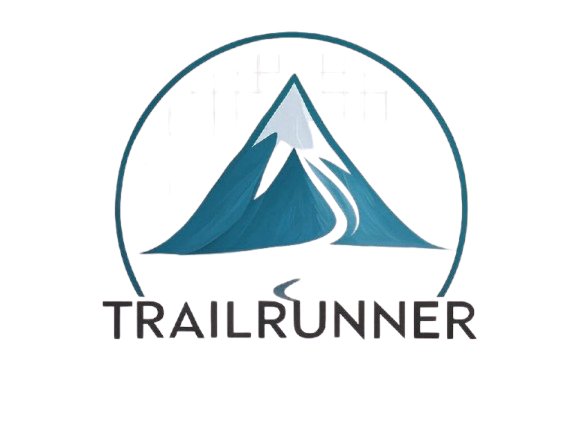Improving your running is about so much more than just spending hours on the road or trails and clocking up the miles. We managed to track down Ronel Nattrass of Runstrong, an accomplished trailrunner herself (having competed for South Africa at the 2013 World Long Distance Trail Champs and also winning the African X trail run that same year) who identified a major gap between running and strength training and specialises in focused strength training sessions, working very closely with some of the country's top flight trail runners including power couple Christiaan and Landie Greyling. We asked her to give us the lowdown on incorporating these types of exercises into your programme in this interview.
Trailrunner: So Ronel, most of the really successful runners seem to be these really skinny individuals. What's the deal with strength training for runners?
Runstrong: If I mention “gym” or “strength training” pictures of bulky muscular people usually spring to mind. Don’t worry, most of the running fraternity think so and will be forgiven for it because that is what we have been led to believe for so many years.
Would you believe it if I told you Landie can squat about 1.5 times her bodyweight? Here is proof!
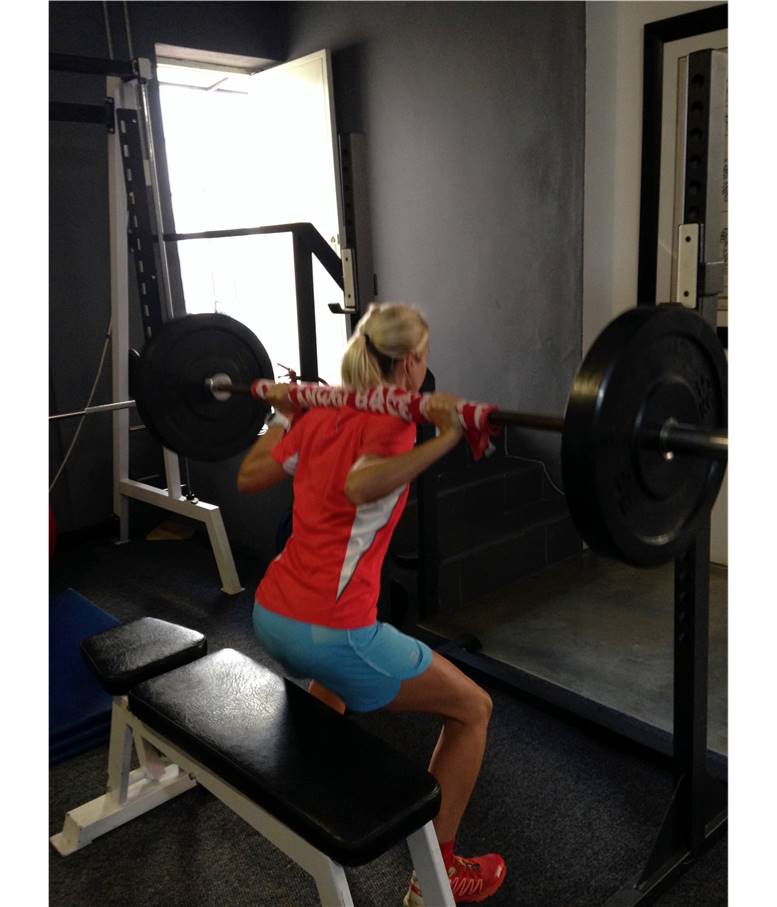
A few years ago I started a trial with Landie, Christiaan and another friend to see how focused strength training would help them in their performance and the results have been amazing. All three of them have noticed big improvements in their climbing ability and overall strength. As we all know, if you can climb, you can win races.
Trailrunner: Is there any science to this?
Runstrong: Absolutely. Endurance performance is a product of three physiological variables: VO2MAX, lactate threshold, and economy. In fact, these three variables explain more than 70% of variation in endurance performance between individuals. Training can help improve VO2MAX, lactate threshold, and economy, which translates into greater fitness and improved performance. However, once aerobic capacity has been maximized, other variables, such as power, start to become increasingly important to further improve performance.
Trailrunner: So how does one achieve this power?
Runstrong: WEIGHTS!! BIG WEIGHTS but little reps! That’s the key to getting strong but not big. You will notice you will gain a kilo or two on the scale as you build some muscle but you will never, and for the ladies, can never bulk up and look like a bodybuilder.
If you are new to strength training you would ideally want to start with a 4 – 6 week period of general conditioning and by that I mean functional movements with little weight or just body weight such as pushups, situps, burpees lunges, jumping squats and pull-ups etc. A great way of doing those kind of things is to join a class. Many of the mainstream gym chains offer such classes.
Once you are functionally strong you can start doing some specific running strength work.
Trailrunner: Once we've completed our conditioning and we feel ready to start getting strong, what kind of exercises should we be doing?
Runstrong: First work on your balance. Think about it, when ever in your running stride are you positioned squarely on both feet… Never! Its therefore really important to strengthen every leg individually.
One leg balancing strength exercises are very important. If you don’t have a balance pad, get one! Its such a versatile tool.
What we normally do in the gym is use one leg balancing exercises as part of our warmup or pre workout routine.
Great for this is one leg squats, one leg deadlifts, one leg pistol squats, single leg stance (just normal balancing), jumps on a balance pad.
All of these exercises help with proprioception as well as strength.
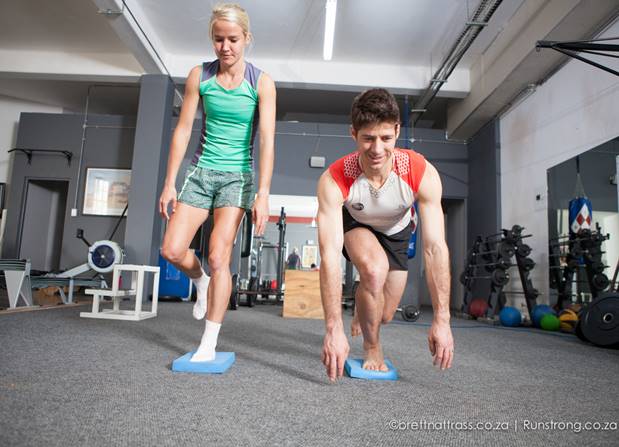
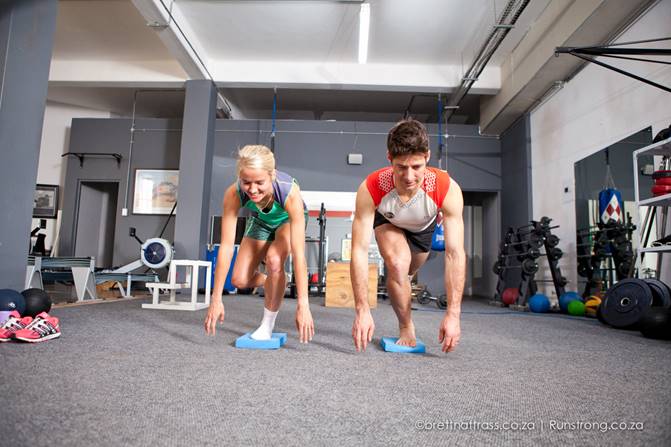
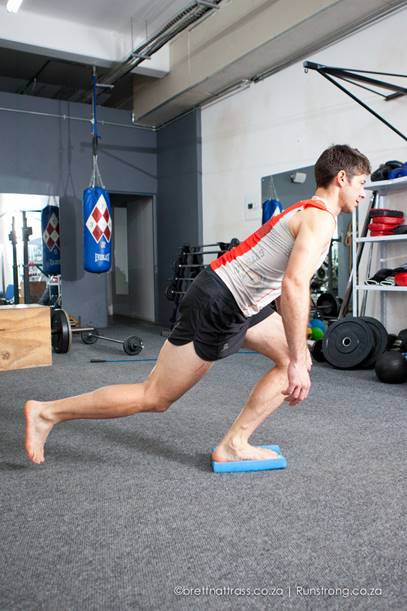
Then you move on to the big weights.
Here you want to build up slowly (over a period of a couple of weeks) so you are sure you learn the right technique. Once your technique is right you are good to go.
Starting off you will be working to a 1rep max. This is the maximum amount of weight you can lift for 1 repetition. Once you have determined your 1rep max, you will be working at percentages of that weight for your lifting. Remember we are going heavy but very few reps.
The exercises that are most beneficial for runners and that you would want to focus on are Deadlifts, Front squats, Back squats, Power cleans, dumbbell/kettlebell swings and boxjumps. If you only have 20 min to do your strength training, these are the exercises you want to prioritse.
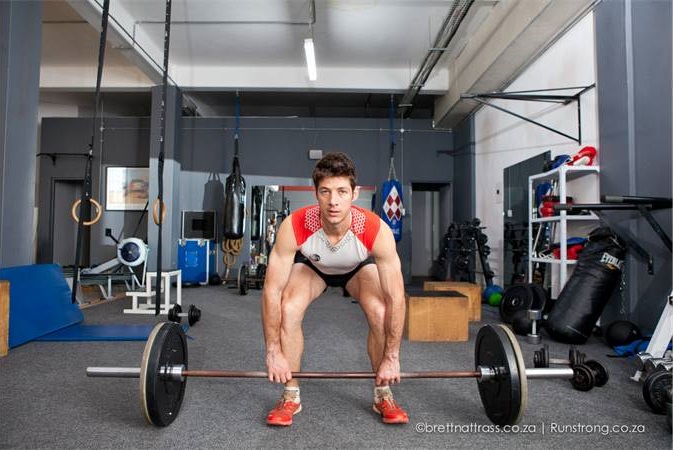
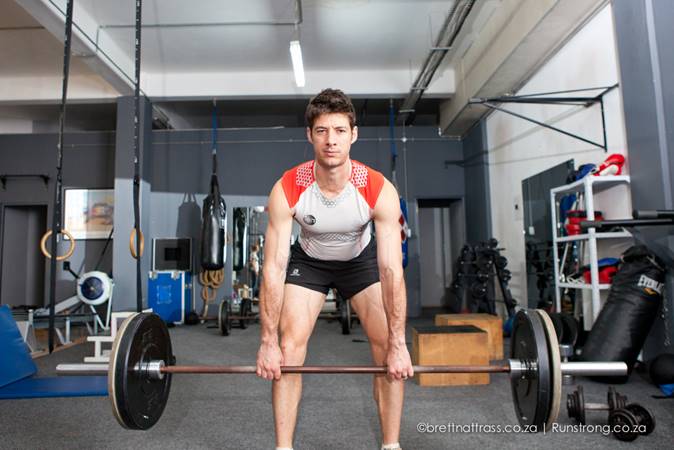
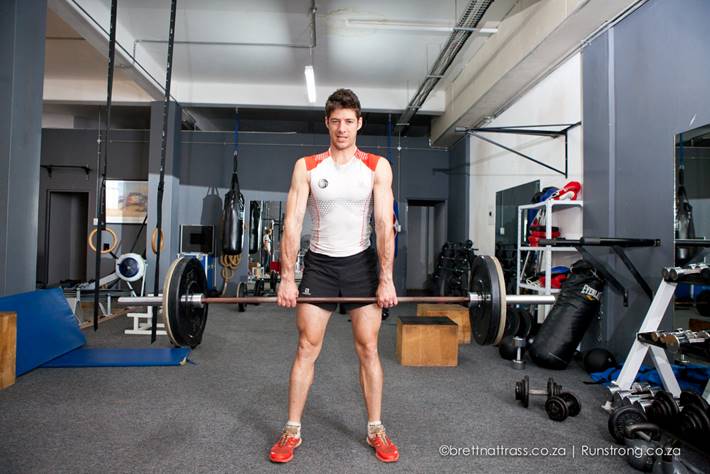
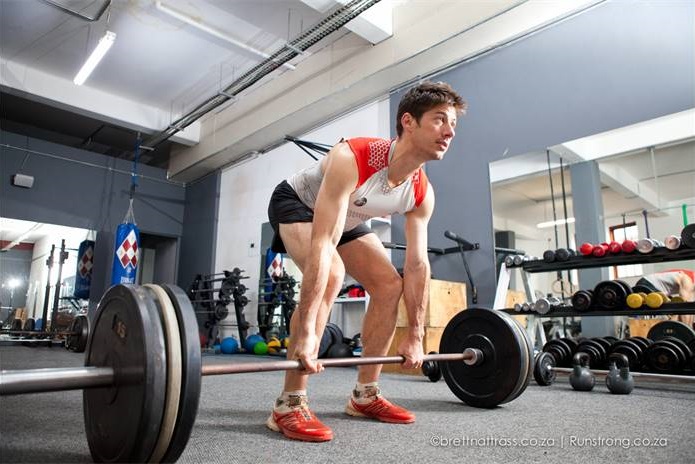
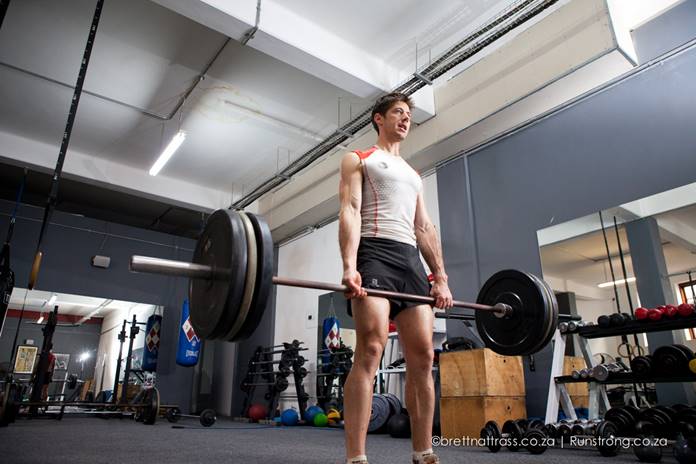
Deadlifts
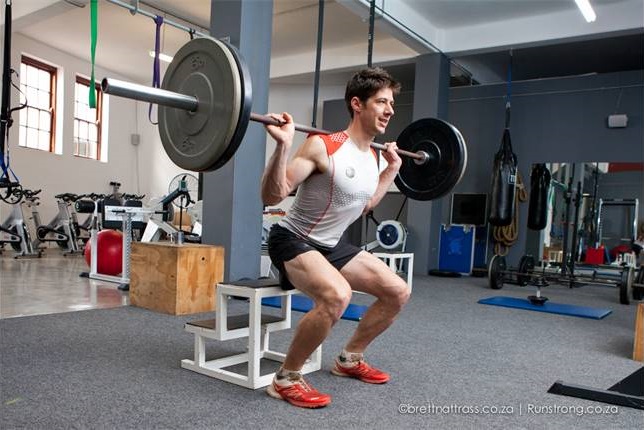
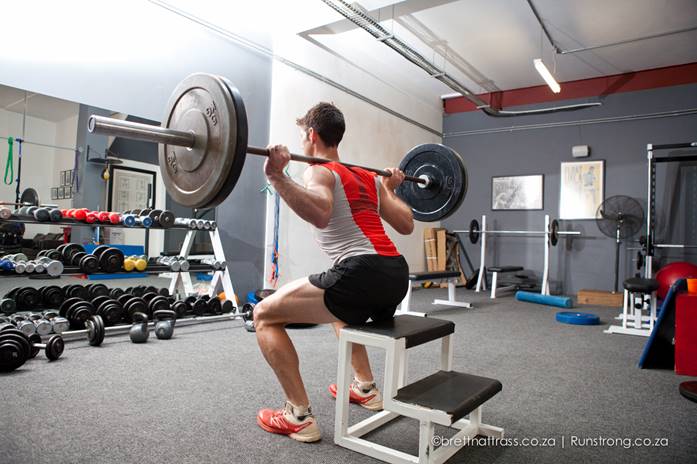
Squats
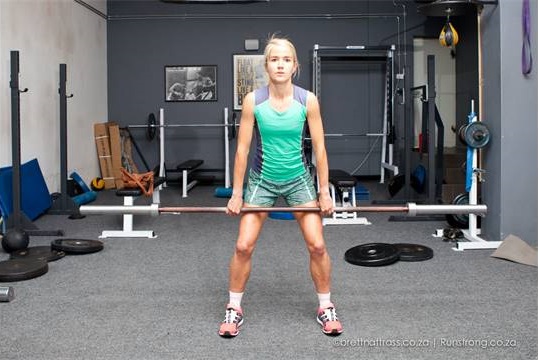
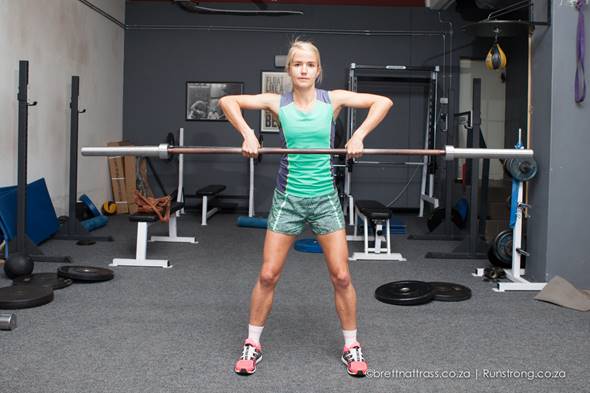
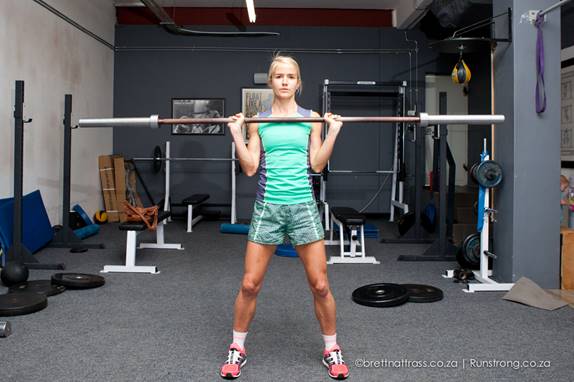
Power cleans

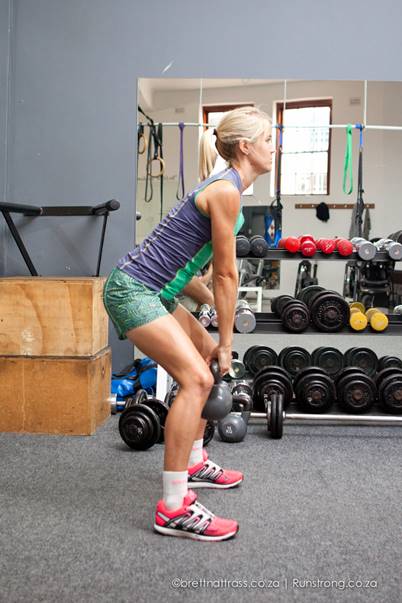
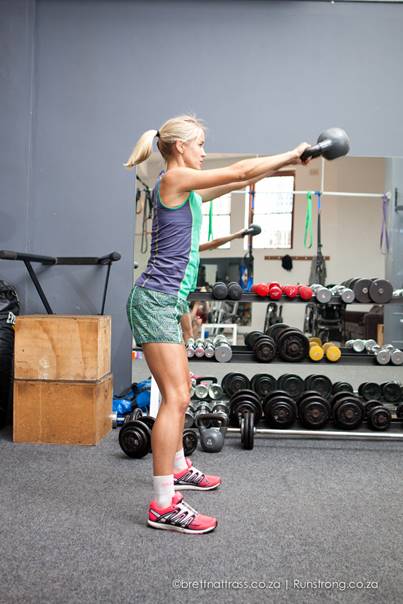
Kettlebell/Dumbell Swings
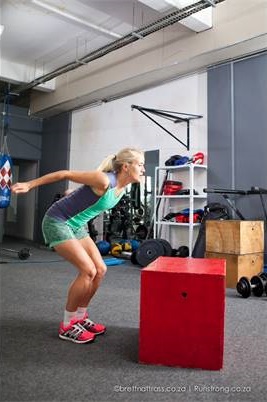
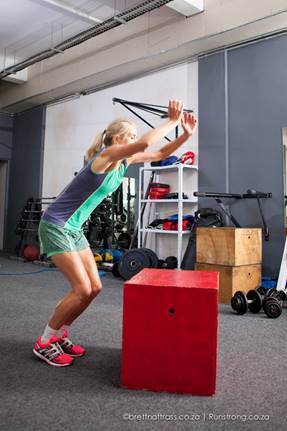
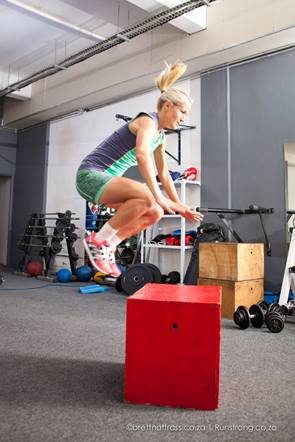
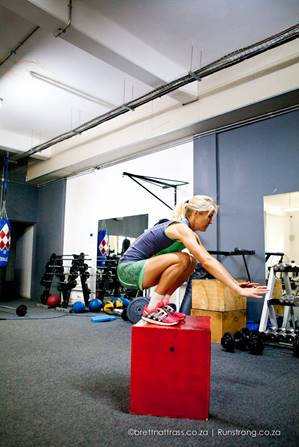
Boxjumps
When you start your weight training phase, be careful not to ditch the body weight exercises such as pushups, pull-ups, lunges etc. Most runners don’t even give upper body exercises a second thought but if you think about how many times you have to stabilize yourself on rocks with your arms, pull yourself up on roots, scramble up or down slopes or even just pump hard with your arms in full stride on flat surface, it all starts making sense.
Trailrunner: And do runners need a strong core?
Runstrong: Yes, for most people core strength = situps and six-packs but that’s not the case.
Your core refers to the area from your hips to your shoulders, front and back.
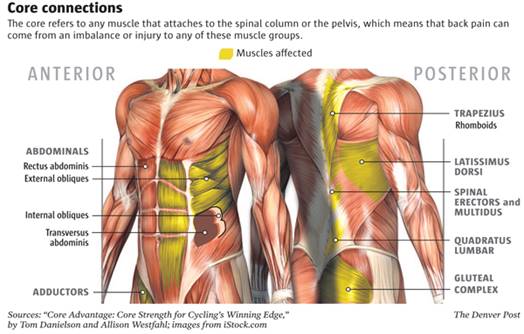
The core is obviously the link between your upper and lower body and keeps everything together.
Because your arms and legs all stem from the core, the strength in your limbs is immediately tied to the strength of your torso.
The main benefit of core strength for runners is the stabilization in the torso. Your core muscles – the chest, back, abs, and oblique’s – are what keep your torso upright when you run, and reduce upper body movement or “wobbling” when moving your arms & legs. When running, core strength allows the pelvis, hips, and lower back to work together more smoothly, with less rocking and therefore, less wasted energy. Core strength also significantly improves balance, meaning that you recover quickly from missteps small & large and how many times during a race does that happen?
Core strength is also vital in injury prevention. When tired at the end of a long race, your form deteriorates and with weak core, your chances of injury rapidly increase.
The 3 best exercises for core strength would be planking, hollow rocks and supermans.
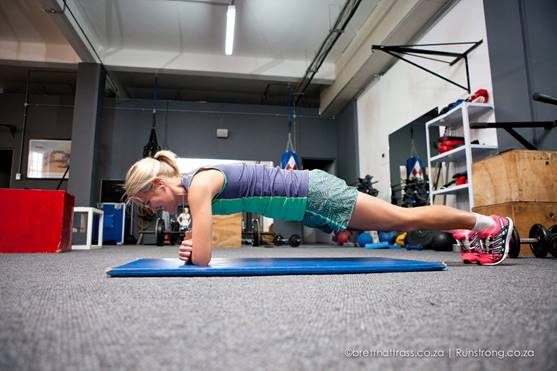 Planking
Planking
Trailrunner: Cool. That does make a lot of sense. And if we're lucky enough to live in the trail running hub of Stellenbosch or nearby, do you offer any classes that we could join?
Runstrong: Definitely. I have functional strength training classes running during the week where we especially focus on all these aspects I have mentioned tonight. Come join us and see how it can and will help you in your performance.
Runstrong offer numerous services for runners who are looking to improve their performance, from Personal training to Lynotherapy, Coaching and Massage Therapy. Visit their website at www.runstrong.co.za or contact Ronel at ronel@runstrong.co.za or 082 569 9791.
